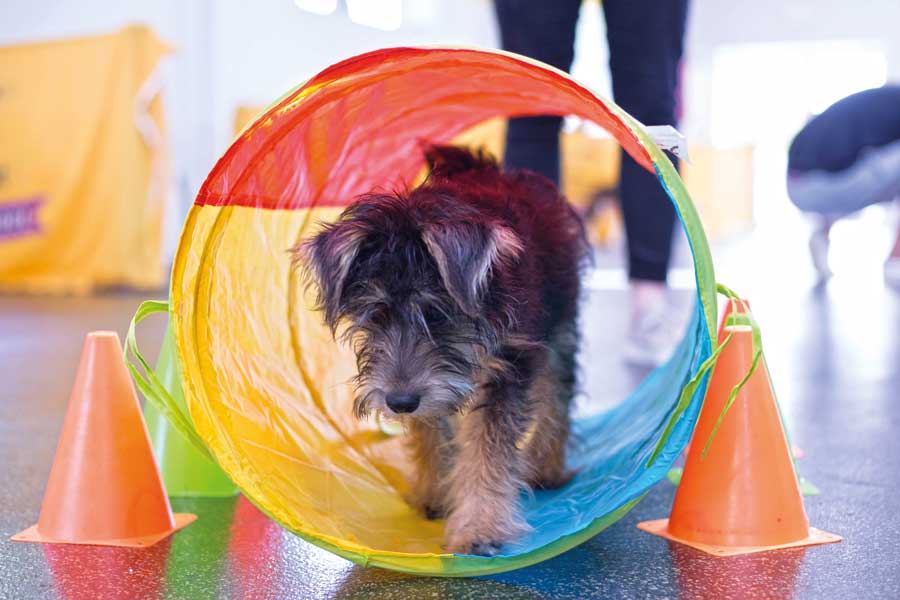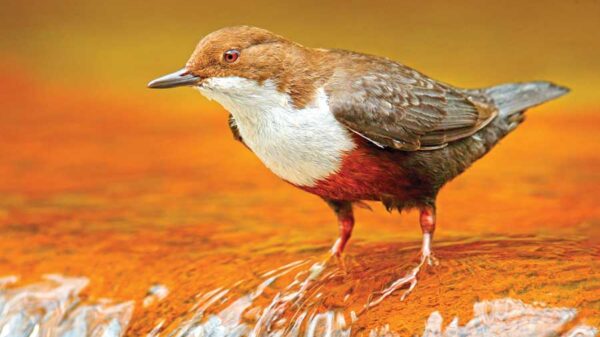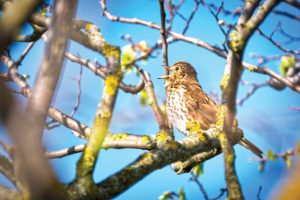Days are certainly lengthening, lighter mornings and stretching evenings cheer me up, I think we all prefer more daylight. If you have managed to put off mowing the lawn until this month you have done well, with the mild winter and plenty of rain the grass has been steadily growing away, and will now require some attention. Start by setting the mower blades high, you only need to top the grass. Trying to scalp the lawn in one go is not only hard work but simply encourages the grass to grow faster, its far better to gradually lower the height of the cut over five to six weeks. This also keeps the grass strong and healthy, with the addition of a little spring feed towards the end of the month your lawn should retain its green healthy colour.
March is also a good time to mulch around both established and new plants, and don’t forget the hedge. A good thick layer of about 5 – 7.5cm ( 2 – 3 inches) is best but don’t cover the crowns of emerging plants as this can cause them to rot. I usually sprinkle a few chicken pellets around plants and along the hedge before mulching as this will promote healthy growth.
Using up the contents of the compost heap allows you to manage the cycle of composting. I have three bays, one that I am using, one that is working (rotting down) and one where all new garden and vegetable arisings are collected. I guess not everyone has space for a three bay compost area so my advice is to invest in two upright compost bins, there are many styles to choose from. Some Local Authorities offer a scheme where compost bins can be purchased at a reasonable cost, so its worth checking that out. Start by filling up the first bin with any vegetable or garden waste, grass clippings and prunings. I have a garden shredder and put all shrub and woody prunings through it before placing on the compost heap. When tipping grass clippings into the bin use a fork to mix in the clippings, this avoids them becoming a soggy smelly layer and encourages better rotting. When you have filled one bin, than start filling the other, after about six to twelve months the first bin should be ready to use, for mulching or as a planting compost, once emptied then simply start the process again and check on the second bin, with luck you will be able to keep a steady supply of rich garden compost.
I think most people grow or have grown spring flowering bulbs, the likes of snowdrops, daffodils and tulips, but how many regularly plant summer flowering bulbs? Alliums, lilies, gladioli and camassia.
I usually start all my summer flowering in pots, in the cold greenhouse or cold frame, before planting them into the garden borders, in early May. This is particularly useful if you have cold wet or clay soil, and although lilies and and alliums can be planted in autumn, the less hardy summer bulbs such as gladioli , freesia and begonia, are definitely worth starting off in pots to establish a good root system before planting out in mid May.
As herbaceous perennials start to emerge its a good idea to prepare all your staking materials, canes wire obelisk’s and the like replacing those that are damaged or just past their best. I did pick up a fantastic tip from a good friend of mine, on how to store your garden canes. If you know a plumber ask them for a couple of short lengths of bent 15 or 22mm copper tubing, made into a hook shape, flatten one end, drill a couple of holes through and screwed to the back of the shed (outside) they provide a brilliant and quite strong storage hook. Old wire hanging baskets can be upturned and placed over short perennials such as geraniums, as they grow through the basket will be completely covered providing support to an otherwise quite floppy subject.
Happy gardening, Martin
Next month, crack on with salad sowing, pruning evergreen herbs, and planting potatoes.







